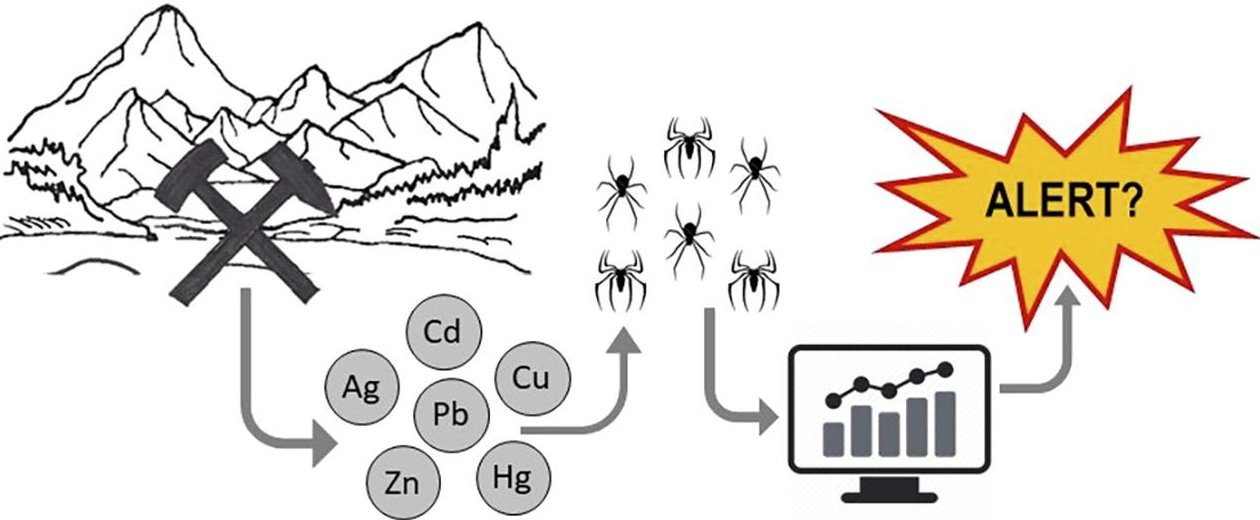Spiders as biomonitors of metal pollution at Arctic mine sites: The case of the Black Angel Pb-Zn-mine, Maarmorilik, West Greenland
New publication by Sophia V. Hansson, Toke T. Høye, Lis Bach, Cecilie Miele, Anders Mosbech, Jens Søndergaard

Abstract:
Metal pollution from mining activities is a well-known environmental concern, and detailed environmental monitoring before, during, and after mining is essential to evaluate the contamination status of a mining area. We therefore investigated the use of Arctic wolf spiders as a potential monitoring organism for metal contamination. In the Arctic, spiders are the most abundant group of terrestrial predators, with documented abilities to accumulate metals. In Greenland however, most contamination studies in relation to mining have targeted the marine environment, with less attention given to the terrestrial. Following a distance transect (0–40 km) near the former Black Angel Pb-Zn-mine, Maarmorilik, West-Greenland, we collected samples of two species of wolf spiders (Pardosa glacialis and P. groenlandica), along with supporting samples from soil and lichens, and analyzed these for geochemical elements using Q-ICP-MS and DMA. We show that metal concentrations in spiders generally reflect the contamination trend of the area, i.e. decreasing concentrations with increasing distance from the old mine, but also that large differences in bioaccumulation efficiency occurs between elements (Ag > Cd > Zn > Cu > Hg > Pb). We also found larger differences between juvenile and adult (female) spiders than between species. Adults generally contained higher concentrations than juveniles, suggesting that distinguishing between age classes of spiders is critical in future assessments of the environmental contamination status using spiders as bioindicator- and biomonitoring organisms. Although further studies are needed, we conclude that, especially in the case of Ag and Cd, Arctic wolf spiders are show a promising biomonitor of metal contamination near Arctic mine sites and elsewhere.
